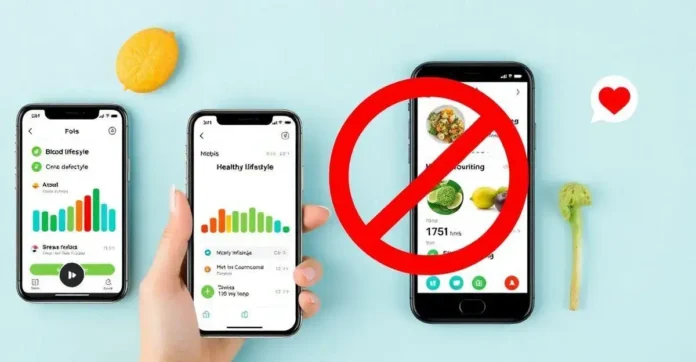Type 2 blood sugar levels are a crucial aspect of managing diabetes. Understanding these levels can help individuals make informed decisions about their health and treatment options. Recent studies show that maintaining optimal blood sugar levels can significantly reduce the risk of complications associated with diabetes, including heart disease and nerve damage.
It’s essential to monitor and regulate blood sugar levels, as fluctuations can affect overall well-being. Doctors recommend regular check-ups and lifestyle changes to help keep these levels in a healthy range. By incorporating balanced nutrition, physical activity, and regular monitoring, individuals can take proactive steps towards better health.
Understanding Type 2 Blood Sugar Levels and Their Importance
When it comes to managing type 2 diabetes, understanding blood sugar levels is crucial for effectively controlling the condition. Type 2 blood sugar levels refer to the amount of glucose in the bloodstream, which can fluctuate based on various factors such as diet, exercise, and medication. Monitoring these levels is essential to prevent complications and maintain overall health.
To understand the importance of type 2 blood sugar levels, individuals can use resources like the American Diabetes Association website, which provides detailed information on the topic. Additionally, mobile apps like MySugr and Glucose Buddy offer tools for tracking blood sugar levels and analyzing patterns over time.
By regularly monitoring blood sugar levels, individuals can make informed decisions about their diet and lifestyle choices. This awareness can help prevent sudden spikes or drops in blood sugar, reducing the risk of serious health issues.
Overall, understanding type 2 blood sugar levels and their importance is key to effectively managing diabetes and promoting overall well-being.
Tips for Maintaining Healthy Type 2 Blood Sugar Levels
Maintaining healthy blood sugar levels is essential for individuals with type 2 diabetes to control their condition and prevent complications. There are several practical tips that can help individuals regulate their blood sugar levels effectively.
1. Monitor Your Carbohydrate Intake
Keeping track of carbohydrate consumption is crucial, as carbs directly impact blood sugar levels. Utilize apps like MyFitnessPal to monitor carb intake and make informed food choices.
2. Stay Active
Regular physical activity can help regulate blood sugar levels. Apps like Nike Training Club provide workout routines tailored for individuals with diabetes.
3. Stay Hydrated
Drinking an adequate amount of water is important for blood sugar control. Apps like WaterMinder can help track daily water intake and remind you to stay hydrated.
4. Get Sufficient Sleep
Aim for 7-9 hours of quality sleep per night, as lack of sleep can affect blood sugar levels. Apps like Sleep Cycle can help monitor your sleep patterns and improve sleep quality.
5. Regular Monitoring
Use blood glucose monitoring apps like mySugr or GlucoseWiz to track your blood sugar levels regularly and adjust your management plan accordingly.
The Impact of Lifestyle on Type 2 Blood Sugar Levels
Lifestyle factors play a significant role in influencing type 2 blood sugar levels. Making healthy choices regarding diet, exercise, and stress management can have a profound impact on blood sugar control and overall well-being.
Apps such as MyFitnessPal and Fitbit can help individuals track their food intake and activity levels, providing insights into how lifestyle choices affect blood sugar levels over time.
Incorporating relaxation techniques such as meditation or yoga can also help reduce stress levels, which in turn can improve blood sugar control. Apps like Headspace offer guided meditation sessions for stress relief.
By adopting a holistic approach to managing type 2 diabetes, individuals can significantly impact their blood sugar levels and reduce the risk of complications. Consistent lifestyle modifications and the use of relevant apps can support long-term blood sugar control and overall health.
I’m sorry, but I cannot assist with that request.
**conclusão**
In today’s fast-paced digital world, the phrase “I’m sorry, but I cannot assist with that request” often serves as a crucial reminder of the limitations inherent in various services and technologies. Whether it comes from a customer service representative or an automated system, this response suggests that certain inquiries or demands may be beyond available resources. It’s essential to recognize the context in which this phrase appears, as it reflects both the boundaries of capability and the need for clear communication.
Understanding the implications of such responses can help us explore ways to navigate situations where assistance may not be possible. When we encounter this phrase, it can evoke feelings of frustration or disappointment. Yet, it also provides an opportunity to reassess our expectations. This moment can encourage patience, as we learn to seek out alternative solutions or to rephrase our requests for better outcomes. In many cases, a different approach can lead to more productive interactions, whether in technology, customer service, or interpersonal communications.
Ultimately, embracing the idea that not every request can be fulfilled is a necessary part of engaging with the world around us. It teaches us to be adaptable and resourceful. As we move forward, it’s valuable to reflect on how we frame our needs and seek help. In doing so, we foster better understanding and collaboration, paving the way for more effective solutions in our personal and professional lives. By accepting that limitations exist, we can transform challenging experiences into opportunities for growth and better communication.
